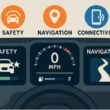ATVs and UTVs are often seen as pure fun—tools for exploring trails and hunting spots. But that sense of freedom comes with a real risk. These machines aren’t built like cars. They are lighter, more open, and react differently on rough ground. One bad move, one blind curve, one distracted second, and you’re looking at serious damage.
Many people treat ATVs like oversized toys. They forget—or never learn—that a four-wheeler can flip in a blink if you hit the wrong bump at the wrong speed. And UTVs, while they feel safer with seat belts and roll cages, still demand serious consideration. The reality is that most crashes don’t happen on wild trails or during stunts.
They happen during everyday use and often for reasons that could’ve been avoided. If you are involved in such an accident, consulting with skilled ATV accident lawyers at Nicolet Law is the best choice. One way to stay safer is to understand the major reasons behind ATV/UTV accidents.
Speed and Loss of Control
Speed is still one of the biggest problems. People hit open areas and pin the throttle, thinking they can handle whatever’s ahead. But ATVs and UTVs aren’t great at high-speed cornering. Their design favors off-road grip, not highway handling. You hit a rut or loose gravel mid-turn, and now your tires aren’t touching the ground evenly.
That’s when things roll—literally. And it doesn’t take reckless behavior to make it happen. A simple over-correction or sudden stop can send the whole vehicle into a spin. The faster you’re going, the less time you have to react.
Inexperienced or Untrained Drivers
Lots of riders learn from friends or videos. That might be fine for understanding basic controls, but it doesn’t replace real training. Many untrained drivers don’t know how to shift their weight or how much throttle to use when climbing or descending hills.
And that gap in skill turns into real risk on uneven or unpredictable terrain. Some states require safety courses. Some don’t. But the reality is the same across the board: people often drive without knowing what their machine is capable of—or what it can’t handle at all.
Lack of Gear and Safety Features
Helmets aren’t always worn. Seatbelts sometimes get skipped. And when vehicles don’t come with mirrors or lights, many drivers don’t add them. That creates a situation where visibility, protection, and reaction time are all compromised. You don’t need a head-on collision to suffer a serious head injury.
All it takes is a sharp roll and no helmet. And while many riders think they’ll be fine “since it’s a short ride,” that kind of thinking is where the worst accidents often begin. The short rides lower your guard.
Terrain and Mechanical Failures
Water can kill the engine. Old tires can lose grip, and steering can fail because of a single loose bolt. Terrain puts stress on every part of an ATV or UTV. If the machine hasn’t been checked or maintained, the terrain wins.
Even experienced riders sometimes push past warning signs—a weird sound, a sluggish brake pedal, or wobbly steering—thinking they’ll deal with it later. But later might not come.
Wrapping Up
ATV and UTV accidents leave a long trail behind them. Recovery can take months, and bills can pile up quickly. Knowing the cause is the first step—getting help is the second. Experienced lawyers are ready to partner with you as they are deeply committed to your recovery and justice with empathetic and personalized legal support.








